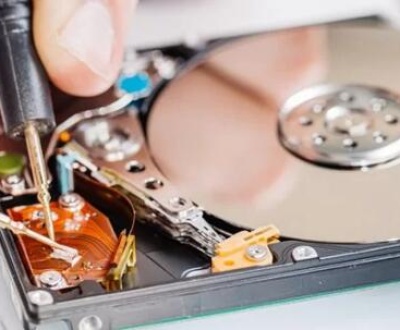Hard disks are crucial for data storage, and their failure can be devastating. When a hard disk is not detecting, it means that your computer’s BIOS or operating system does not recognize the drive. This can happen due to various reasons, including hardware failures, software corruption, or connection issues. Recovering data from such a disk involves diagnosing the problem, applying appropriate fixes, and using specialized tools to retrieve the data.
Diagnosing the Problem
Physical Connection Issues
Check Power Supply: Ensure that the hard disk is receiving power. If it’s an external drive, try using a different power adapter or USB cable.
Inspect Connections: Verify that all cables are securely connected. For internal drives, check both the power and SATA cables.
Try Different Ports: Connect the hard disk to different USB or SATA ports on your computer.
Test on Another Computer: Sometimes, the issue might be with your computer’s hardware. Connecting the hard disk to another computer can help rule this out.

BIOS/UEFI Settings
Access BIOS/UEFI: Restart your computer and enter the BIOS/UEFI settings. The method to access BIOS/UEFI varies but usually involves pressing a key like F2. F12. DEL, or ESC during startup.
Check Drive Detection: Look for the hard disk under the storage or boot settings. If it’s not listed, there may be a hardware issue.
Hardware Diagnostics
Listen for Noises: A healthy hard disk should produce a gentle whirring sound. Clicking or grinding noises indicate mechanical failure.
Use Diagnostic Tools: Tools like SMART (Self-Monitoring, Analysis, and Reporting Technology) can provide insight into the health of the hard disk. Many BIOS/UEFI systems include a SMART status check.
Recovery Methods
Software Solutions
If the hard disk shows up in BIOS/UEFI but not in the operating system, software tools can help recover data.
Data Recovery Software: Use specialized software like Panda Recovery, Recuva, EaseUS Data Recovery Wizard, or Stellar Data Recovery. These tools can scan the disk for recoverable data.
Steps to Use Data Recovery Software:
Install the software on a different drive than the one you’re trying to recover.
Launch the software and select the undetected hard disk.
Perform a deep scan to locate recoverable files.
Preview and select the files you want to recover.
Save the recovered files to a different storage device.
Disk Management Utility: On Windows, you can use Disk Management to assign a drive letter to the disk if it is detected but not accessible.
Open Disk Management by right-clicking on ‘This PC’ or ‘My Computer’ and selecting ‘Manage.’
Locate the problematic disk, right-click it, and choose ‘Change Drive Letter and Paths.’
Assign a new drive letter.
CHKDSK Utility: The CHKDSK command can repair file system errors.
Open Command Prompt as an administrator.
Type chkdsk /f /r X: (replace X with the drive letter) and press Enter.
Hardware Solutions
If software solutions fail, hardware interventions might be necessary.
Check for Physical Damage: Inspect the hard disk for visible damage. If there are physical damages, avoid using DIY methods and consult professionals.
Use a Different Enclosure: For external hard drives, try using a different enclosure or USB adapter.
Freezing Method: In some cases, placing the hard disk in a sealed plastic bag and freezing it for a few hours can temporarily allow it to work, providing a short window to recover data. However, this is risky and should be a last resort.
Professional Data Recovery Services
If the hard disk has suffered severe physical damage or if you’re unable to recover the data using the above methods, professional data recovery services are the best option. These services have specialized equipment and cleanroom facilities to recover data from damaged disks.
Steps to Engage Professional Services:
Research Reputable Companies: Look for companies with good reviews and certifications.
Consultation: Contact the company for a consultation. Many offer free evaluations.
Send the Drive: Ship your hard disk to the service provider following their instructions.
Receive Quotation: After evaluation, the company will provide a quotation for the recovery service.
Data Recovery: If you agree to the terms, the company will proceed with the recovery and return your data on a new storage device.
Preventative Measures
Once you have successfully recovered your data, it’s important to implement preventative measures to avoid future data loss.
Regular Backups: Maintain regular backups of your data using cloud storage, external hard drives, or network-attached storage (NAS).
Use Reliable Hardware: Invest in high-quality hard disks and storage devices.
Monitor Disk Health: Use tools like CrystalDiskInfo or SMART monitoring software to keep an eye on your disk’s health.
Power Protection: Use uninterruptible power supplies (UPS) to protect your hardware from power surges and outages.
Recovering data from a hard disk that is not detecting can be challenging, but with the right approach, it is often possible. Start with basic troubleshooting to identify and resolve simple issues. If the problem persists, use specialized data recovery software or consider professional services for severe cases. Finally, ensure regular backups and disk health monitoring to protect your data in the future.
About us and this blog
Panda Assistant is built on the latest data recovery algorithms, ensuring that no file is too damaged, too lost, or too corrupted to be recovered.
Request a free quote
We believe that data recovery shouldn’t be a daunting task. That’s why we’ve designed Panda Assistant to be as easy to use as it is powerful. With a few clicks, you can initiate a scan, preview recoverable files, and restore your data all within a matter of minutes.
Subscribe to our newsletter!
More from our blog
See all postsRecent Posts
- Data recovery salt lake city utah 2025-04-18
- Data recovery sacramento 2025-04-18
- Data recovery miami 2025-04-18

 Try lt Free
Try lt Free Recovery success rate of up to
Recovery success rate of up to









